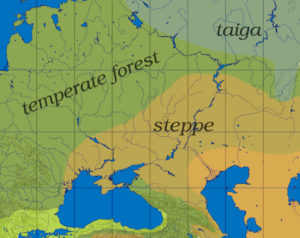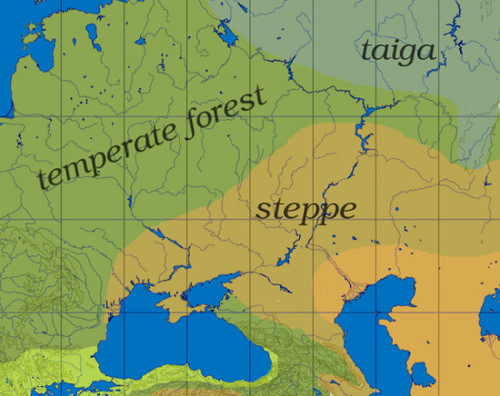
UPPSALA UNIVERSITY—A new study, looking at the sex-specifically inherited X chromosome of prehistoric human remains, shows that hardly any women took part in the extensive migration from the Pontic-Caspian Steppe approximately 5,000 years ago. The great migration that brought farming practices to Europe 4,000 years earlier, on the other hand, consisted of both women and men. The difference in sex bias suggests that different social and cultural processes drove the two migrations.
Genetic data suggest that modern European ancestry represents a mosaic of ancestral contributions from multiple waves of prehistoric migration events. Recent studies of genomic variation in prehistoric human remains have demonstrated that two mass migration events are particularly important to understanding European prehistory: the Neolithic spread of agriculture from Anatolia starting around 9,000 years ago, and migration from the Pontic-Caspian Steppe around 5,000 years ago. These migrations are coincident with large social, cultural, and linguistic changes, and each has been inferred to have replaced more than half of the contemporaneous gene pool of resident Central Europeans.
Dramatic events in human prehistory can be investigated using patterns of genetic variation among the people that lived in those times. In particular, studies of differing female and male demographic histories on the basis of ancient genomes can provide information about complexities of social structures and cultural interactions in prehistoric populations.
Researchers from Uppsala and Stanford University investigated the genetic ancestry on the sex-specifically inherited X chromosome and the autosomes in 20 early Neolithic and 16 Late Neolithic/Bronze Age human remains. Contrary to previous hypotheses suggesting patrilocality (social system in which a family resides near the man’s parents) of many agricultural populations, they found no evidence of sex-biased admixture during the migration that spread farming across Europe during the early Neolithic.
For later migrations from the Pontic steppe during the early Bronze Age, however, we find a dramatic male bias. There are simply too few X-chromosomes from the migrants, which points to around ten migrating males for every migrating female, says Mattias Jakobsson, professor of Genetics at the Department of Organismal Biology, Uppsala University.
The research group found evidence of ongoing, primarily male, migration from the steppe to central Europe over a period of multiple generations, with a level of sex bias that excludes a pulse migration during a single generation.
_______________________________________
Map shows the Pontic-Caspian Steppe region. Dbachmann, Wikimedia Commons
_____________________________________________________________
The contrasting patterns of sex-specific migration during these two migrations suggest a view of differing cultural histories in which the Neolithic transition was driven by mass migration of both males and females in roughly equal numbers—perhaps whole families—whereas the later Bronze Age migration and cultural shift were instead driven by male migration.
Article Source: Uppsala University news release.
______________________________________________
See much more about this in a related in-depth major feature article, The Battle Axe Culture, in the upcoming Spring 2017 issue of Popular Archaeology Magazine.
______________________________________________
Subscribe to Popular Archaeology Premium. Available on all laptops and mobile devices, and still the industry’s best value at only $9.00 annually.
___________________________________________
Travel and learn with Far Horizons.
____________________________________________
This richly illustrated issue includes the following stories: Recent findings shedding new light on the whereabouts of the remains of Philip of Macedon, father of Alexander the Great; how an archaeologist-sculptor is bringing bones of the dead back to life; archaeologists uncovering town life at the dawn of civilization; an exclusive interview with internationally acclaimed archaeologist James M. Adovasio about what makes the Meadowcroft Rockshelter prominent in the ongoing search for the first Americans; what archaeologists are finding at the site of the ancient city of Gath, the home town of the biblical Philistine giant, Goliath; and how scientists are redrawing the picture of human evolution in Europe. Find it on Amazon.com.








